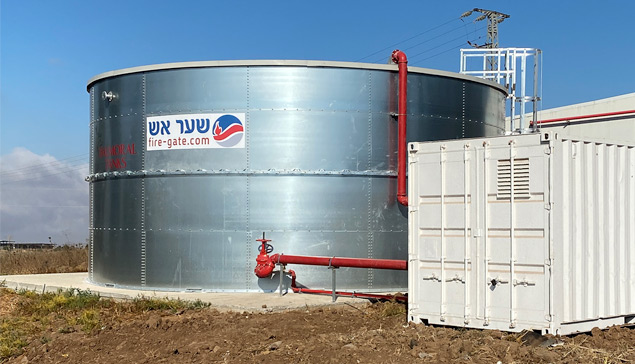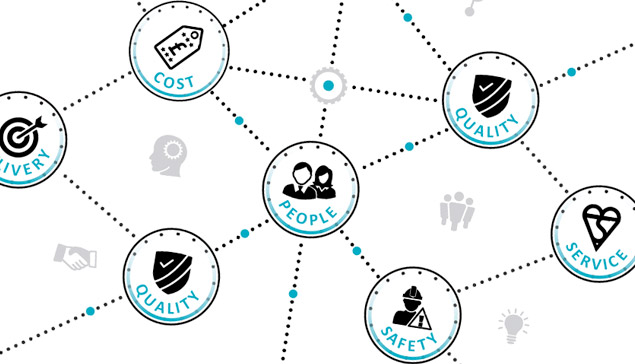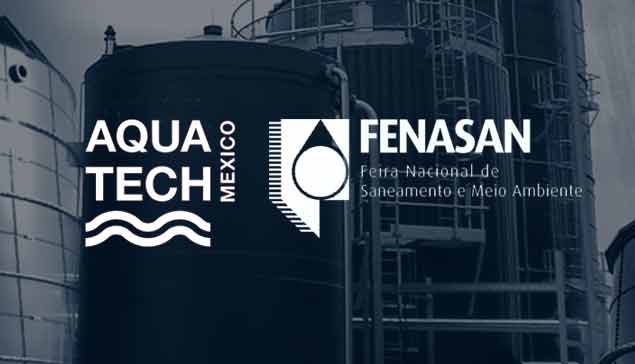
Commentary - April 2022
Your 5-step guide to specifying RAS fish farming tanks
Specifying fish farming tanks: steps 1-5 in priority order
Nobody embarks on a land-based aquaculture project with a blank cheque book. Third-party investors and private equity funds know the importance of precise cost control on projects of this nature. Designers and process engineers therefore work to strict budgets.
So it is tempting to go straight to the bottom line. But cost is the fifth and final step in the process of specifying tanks for land-based recirculating aquaculture systems (RAS). Get the crucial first four steps right and the fifth will be easier. Get them wrong and there are likely to be unfortunate consequences including incorrectly specified tanks causing shorter working lifespan and operational inefficiencies.
These are the five steps in order:
- Design/number of tanks
- Tank limitations
- Tank lifespan
- Construction programme/sequencing
- Cost
Step 1: Design/number of fish farming tanks
Commercial RAS tanks can be manufactured from:
- bolted steel with an epoxy or glass fusion coating for longer lifespan, low maintenance and easy cleaning
- glass-reinforced polyester (GRP) – which is affected by size limitations
- concrete – which is expensive
- galvanised steel with a liner – which can suffer from durability issues compared with other RAS tank materials.
Epoxy-coated steel fish farming tanks
Epoxy-coated RAS tanks are reliable, low maintenance and easy to clean. Epoxy is no longer a ‘newcomer’ product in this field: it is a proven solution with a history of success, quality and performance going back at least 25 years.
Benefits over other tank types include high impact resistance, lower carbon footprint and a more efficient design process. Which type of epoxy coating you specify will depend on whether you are farming freshwater or saltwater fish species. Freshwater RAS tanks should meet the 1,100v zero defect standard; saltwater tanks should be zero defect tested to 1,500v.
Fusion-bonded efusion® RAS tanks meet international standards including:
- ISO 9227
- ISO 21809-2
- ISO 6270-2
- ISO 2815
- ISO 6272-2
- ISO 16474-2
- ISO 16474-3
- ISO 12944
- ISO 28765:2016
- AWWA D103-19
- NSF®-61.
Step 2: Limitations Of RAS tank types
Each tank type has its limitations – but some materials have fewer limitations than others.
Epoxy-coated and glass-coated steel tanks are manufactured from prefabricated panels and assembled on-site. This makes it easier to specify, transport and construct much larger tanks – far larger than those manufactured from GRP. And with GRP, the larger you go, the more disproportionately costly it can become.
Epoxy-coated, glass-coated and concrete tanks lend themselves well to backfilling – something you may need to consider for:
- draining the tanks by gravity rather than pumps
- fast and easy regular access to the top of the tank (saving or reducing the cost of a spiral walkway).
Retrofitting to epoxy-coated and glass-coated tanks is also much easier. Not so good for concrete, galvanised and GRP tanks. That makes epoxy-coated and glass-coated tanks much more flexible should you wish to modify them as your requirements evolve.
GRP tanks have a sweet spot when it comes to size; they are ideally suited to diameters of 6-10 metres. GRP is not as strong as steel. Nor is it particularly well suited should you wish to bolt on overflow boxes and/or walkways.
Step 3: Life expectancy of RAS tank types
Prefabricated concrete RAS tanks have a very good life expectancy. But they are less easy to maintain and repair should faults occur or should you wish to modify them.
Galvanised steel tanks can be affected by liner issues with regard to life expectancy. Their liners may need to be replaced every 10 years. Each time that means:
- destocking and draining each tank
- removing the old liner
- fitting and testing the new liner
- refilling and restocking each tank.
Multiply that by the number of RAS tanks. Then multiply it by four in 40 years. That is significant downtime that will affect your yield, revenue and profits. Especially when compared with epoxy-coated or glass-coated tanks which suffer no such liner issues.
Furthermore, galvanised steel may be more prone to corrosion than coated steel if the tanks are located in more saline coastal environments.
Step 4: Tank construction programme/sequencing
Building a land-based fish farm is no small undertaking. Successful planning and execution of the construction sequencing is vital to ensure your new RAS operation is built in the most efficient way possible – speeding up the build, reducing waste and minimising downtime. Getting the construction logistics right shortens the time from site surveying and groundworks to your first successful fish yield.
Once the tanks are in then it is time for pipe fitting, installation of pumps, valves, electronics, sensors and HMI controls. And all the while you will need to manage truck movements and an army of sub-contractors on an ever-changing site.
Epoxy-coated tanks are a particularly effective choice in respect of the construction programme because they are so quick to assemble. So your RAS operation can go live sooner and start repaying your investment in it. Quicker to build, quicker to launch, quicker to generate profits.
That also applies to any anaerobic digestion tanks project you may have running in parallel with your fish farm. The sooner all those fish start generating waste, the sooner you may need AD tanks to digest that waste and turn it into profitable biogas.
Step 5: Cost
And so finally we get to the critical issue of cost. But by now you will understand how the previous four steps can have a dramatic effect on the profitability of what is a project with a lifespan of around 40 years.
Short-term savings – no matter how tempting they may seem – can be easily eclipsed over four decades by the long-term cost of missed opportunities earlier in the specification, construction and commissioning phases.
Buy the wrong tanks, specify the wrong materials for them, and you may be rueing the long-term financial impact of the decision for a very long time. But get steps 1 to 4 right and there will be no nasty surprises – either during the construction or in the years immediately afterwards.
The key is to get Balmoral Tanks involved as early as possible in the planning process – enabling you to identify and lock in opportunities and potential efficiencies.
You will be rewarded with an accurate, secure and well-founded project that pays dividends for decades to come – based on high-quality RAS tanks that require little or no maintenance.
Why Balmoral blutanQ for RAS tanks?
With more than 40 years’ experience, Balmoral Tanks developed blutanQ epoxy-coated and glass-coated steel RAS tanks to help aquaculture entrepreneurs maximise production yields and enjoy a greater return on investment:
- World-class solutions – Balmoral Tanks is a global innovator, delivering leading-edge tank technology that increases yields, revenues and profits.
- Your specialist partner – project coordinators, investors, designers and EPC contractors depend on Balmoral’s technical expertise because we see the big picture, fully understand the industry and solve each customer’s unique challenges. Every project has its own special requirements.
- Long-term relationships – working together with our clients to build in excellence with bespoke solutions that meet project-specific requirements and deliver for decades to come. It’s never about one project. It’s about forging an enduring partnership that helps you to create a solution for this generation and the next.
Clients rely on us for help throughout the entire process – from conceptual design, through construction and testing of the tanks, to excellence in aftercare. All backed by a dedicated project management team and direct aftersales support. No third parties – Balmoral is fully accountable. We’re committed to the success of your tank aquaculture projects: this one, and those that will follow.







